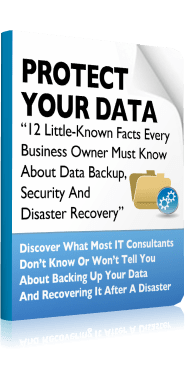 Smaller companies often struggle to develop and invest in robust IT security systems, which can leave them relatively more vulnerable to cyber attacks.
Smaller companies often struggle to develop and invest in robust IT security systems, which can leave them relatively more vulnerable to cyber attacks.
If that's the situation you're in and you're trying to decide what to invest in and where to use the money that you have to spend on IT security, here's a quick overview of the basics you need to have covered.
1 - Door Access Control
Believe it or not, this properly falls under the cybersecurity umbrella since magnetic door locks and swipe cards (or similar technology) are ultimately managed via a server on your company's network.
If you don't have such a system in place, we strongly urge you to consider one. Once it's in place, regularly review who has what level of access.
In addition to that, most door security systems include some type of monitoring software, and it pays to set up automated alerts when an employee shows as deviating from their usual routine.
Example: If Linda's regular work schedule has her swiping her card and entering the office just before 8AM, and leaving a little after 5PM and suddenly you see her coming in at 3:00 in the morning, that's a sign that something is amiss and is well worth investigating.
2 - Encryption, Encryption, Encryption
Even if a hacker breaches your network, they can't make use of any files they get their hands on if they can't decrypt the data.
There are three types of encryption you want to be focused on: Encryption at rest, encryption in use, and encryption in transit. If your files are encrypted in all three states, a hacker is going to be hard-pressed to get anything useful from your network, even if they break in.
3 - Ongoing Security Training
The sad truth is that all the fancy hardware and software in the world can be circumvented by going after the weakest link in your security chain, which is always your people. If someone uses a weak password for the sake of convenience, that's a way in for a hacker.
If someone is prone to opening email attachments from unverified sources, that's another potential inroad. The problem is that too many employees don't fully appreciate the security risks that these seemingly innocuous activities carry with them. Make sure they know. Make sure everyone knows.
There's a lot more to robust security of course, and cybersecurity is constantly evolving, but if you start here, with these three items, you'll be miles ahead.



